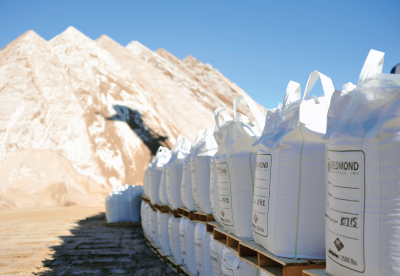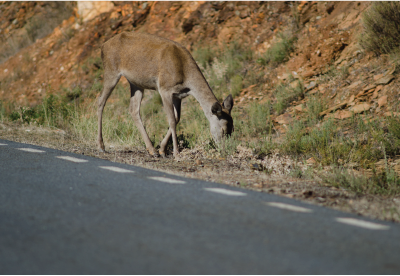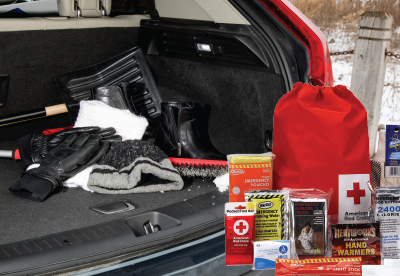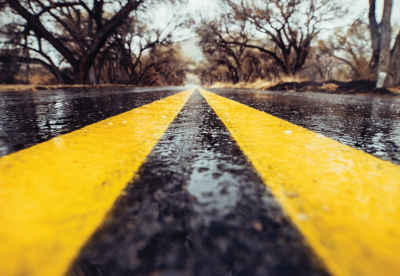Date September 1, 2023 | Brooke Loeffler
New Driver's Guide For Winter
Before You Hit The Road

Stay Connected
- Make sure your phone is fully charged, bring a charging cable and install helpful apps for weather, traffic, and road conditions (Weather Bug, Weather Channel, Accuweather, Waze, Google Maps, Apple Maps, and Plugshare (for electric vehicles).
- Look at conditions along your whole route (pay close attention to cold high elevation areas)
- Install your insurance app to make it easier to access your policy on the road
- Before long drives or traveling through a rural area, let a loved one know your route and ETA in case of an emergency.
Prep Your Car
- Get to know your car: Using your vehicle’s manual, familiarize yourself with your winter safety features and how they work. Learn about traction control, stability control, ABS, and 4-wheel or all wheel drive settings and remember...these do not make you or your car invincible!
- Check your make and model for recalls and schedule those appointments before making long drives.
- Perform a pre-winter tune up (if your skill set allows), or schedule an appointment with a trusted mechanic. Check your battery, fluids (oil, antifreeze, washer fluid), wipers, tires (including the spare), hoses, belts, heater/defroster, spark plugs, lights, brakes, and windshield.
Pack An Emergency Car Kit
- Pack a winter emergency vehicle kit and keep it well stocked as items are used during the upcoming months.
- Select a powerful granular deicer for your kit to melt ice and restore traction around your tires if you get stuck. Nature’s Blend from Ice Slicer gives you all the high performing power of road salt and is faster acting, longer lasting, less corrosive, and safer to use than white salt.
Winter Driving Basics
Ideally, none of us would have to drive during a winter storm. However, staying home during snowy and icy conditions is not always possible. Here are some tips for driving in winter weather.

Give Yourself Extra Time
- Pad your timeline from start to finish, beginning with extra time for removing ice and snow from your car.
- Don’t try and save time by leaving your vehicle unattended while it warms up; car thieves love that!
- Once you have set off, assume that your travel time will take longer than usual.
Turn On Your Lights
- Wintry conditions wipe out visual markers on and off the road. Increase your visibility by running your lights during day and night hours.
Slow Down
- Slow down both your acceleration and braking and drive according to road conditions, not the speed limit. The faster you are going, the less reaction time you will have when you encounter ice, a spun out vehicle, a snow plow, etc. It may take you longer to get where you are going, but you will at least get there safely!
Stay In Control
- Don’t use cruise control or auto-pilot functions during the winter. Even if road conditions don’t look dangerous, hazards can pop up when you least expect it and you must be in complete control of your vehicle at all times.
- You will also be able to maintain better control over your vehicle if you drive in the tracks of the car in front of you.
Be Extra Alert
- Run your driving app so you can receive alerts about upcoming hazards and road closures.
- Watch out for black ice, especially in shady areas. If you encounter black ice, immediately let off both the gas and the brakes. Keep your steering wheel as straight as possible and only make gentle adjustments to avoid fishtailing while your car regains traction.
- Slow down while driving over road aggregates. Some municipalities use sand and gravel on the road to improve tire traction. Since these solids don’t melt, you will need to watch for airborne aggregates that get flipped up and can damage your windshield.
- Keep an eye out for increased animal activity, especially through rural areas. Extra salt on the road can create a salt lick that attracts wildlife.
Don’t Crowd the Plow
Snow plows are our winter road safety heroes, and we should adjust our driving accordingly.
- Visibility: Keep your lights on and stay out of the plow’s blind spots (which are much larger than other vehicles)
- Speed: Snow plows typically under 45 miles an hour, depending upon conditions. Slow down around the plows and be patient.
- Passing: The least dangerous area on the road is typically a safe distance behind a snow plow. If you must pass a plow, never pass on the right (snow is directed off the plow’s blade to the right and it contains their largest blind spot). Allow plenty of room ahead of the plow before changing lanes. Change lanes carefully because hazardous ridges of snow form along lane dividers.
- Distance: Give snow plows plenty of space to accommodate their attachments, salt/aggregate dispersal, and the snow cloud that comes off the blade. Remember, larger vehicles require longer stopping distances so give them a larger safety bubble.
- Echelon Plowing: Snow plows sometimes operate side by side across multiple lanes of a freeway to clear large areas at once. Never try to pass or go between plows in an echelon formation.
Road Emergencies
Use your emergency car kit and the following tips to help yourself or others that are stuck in a snowy situation.
 Keep Your Exhaust Pipe Clear
Keep Your Exhaust Pipe Clear
- If you are on the roadside during the winter for any reason, make sure your exhaust pipe is clear of ice and snow to prevent carbon monoxide poisoning.
Call For Help
- Depending upon the severity of the situation make the necessary calls to 911, roadside assistance, towing services, or nearby friends and family.
- Make these calls immediately before your phone battery depletes.
Stay Visible
- Stay with your vehicle
- Make it as visible as possible for other vehicles and those coming to your aid. Use your vehicle’s hazard flashers, emergency light sticks, and other reflectors to increase your visibility.
- Consider placing a few of these light sources up high on your vehicle (like your roof) if the snow is especially deep.
Avoid Overexertion
- Any physical activity during cold temperatures is much more demanding on your body than you realize. Use your emergency car kit and take rest, warm up, snack, and drink breaks in your vehicle.
Carefully Try To Free Your Vehicle
- Use your shovel and granular deicer to clear ice and snow away from your tires.
- Gently rock your vehicle back and forth using drive and reverse to gradually dislodge it from compacted snow.
- Avoid revving the accelerator so your fast spinning wheels don’t dig you deeper.
Conserve Fuel and Battery Life
- As you wait for assistance, use gas and electronics sparingly as needed.
- Save your phone for calls only and use your external charger from your emergency car kit.
- Use your insulation blankets and air activated hand warmers first before using fuel to warm your car’s cabin.
- To prevent hypothermia and other winter health concerns, only turn on your car every now and then to warm up.
Winter First Aid Basics
- Remove wet clothing immediately and replace with dry layers if possible, especially on your feet.
- If you experience hypothermia symptoms, warm the center of your body, chest, neck, and head first. If you are with someone, direct skin to skin contact is the most efficient method of heat transfer.
- Once your core temperature improves, your body will pump heat into your extremities (ears, nose, hands, and feet). These areas are the most susceptible to frostbite. Use your core areas, such as your armpits and abdomen to warm your extremities. If you feel symptoms of frostbite, do not massage or put weight on the affected area to prevent further tissue damage.
- Only use slow and gradual warming methods. Cold temperatures numb nerve receptors, so quick heating methods can often cause burns and other injuries.
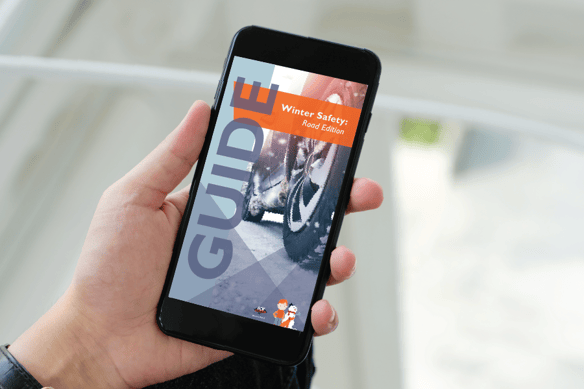
Want more winter driving tips? Get our helpful Winter Road Guide.
© 2024 Redmond Minerals Inc.


